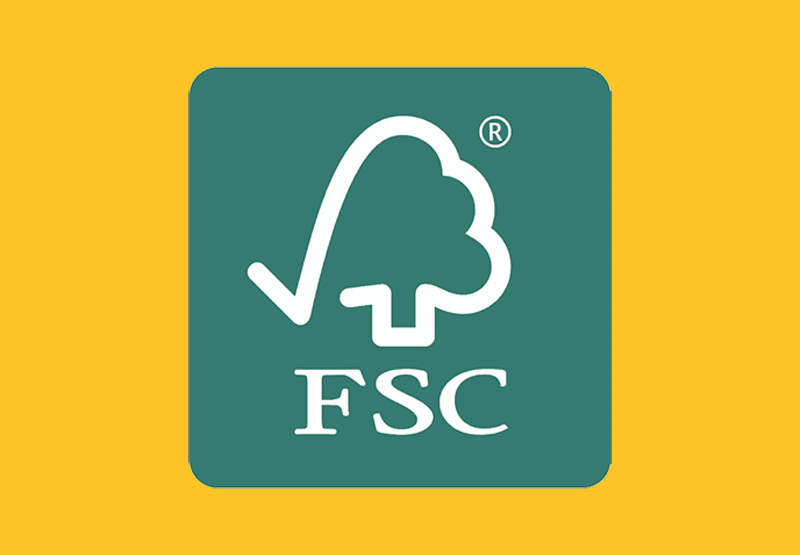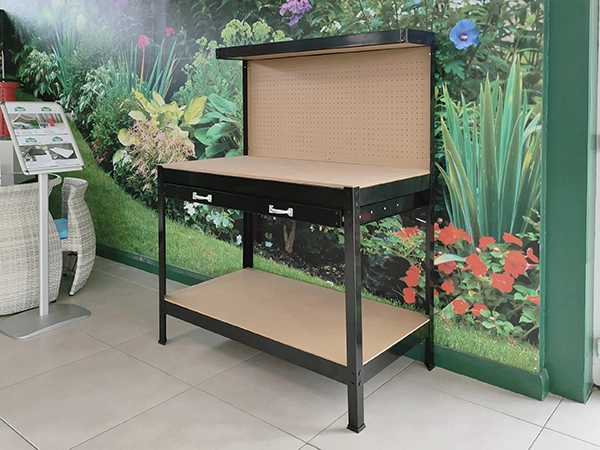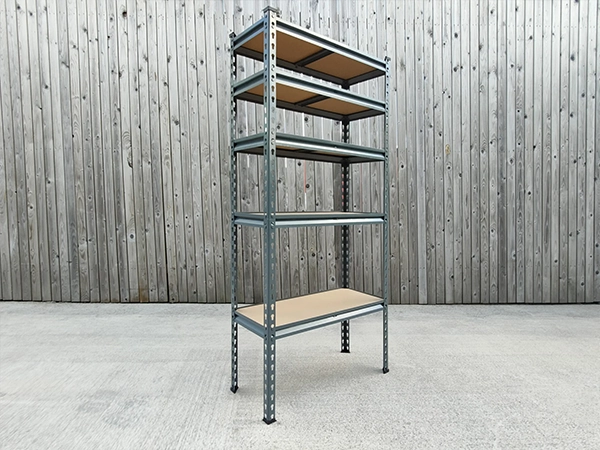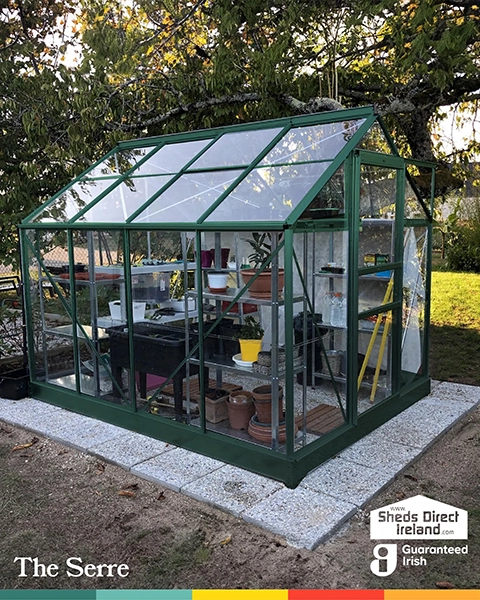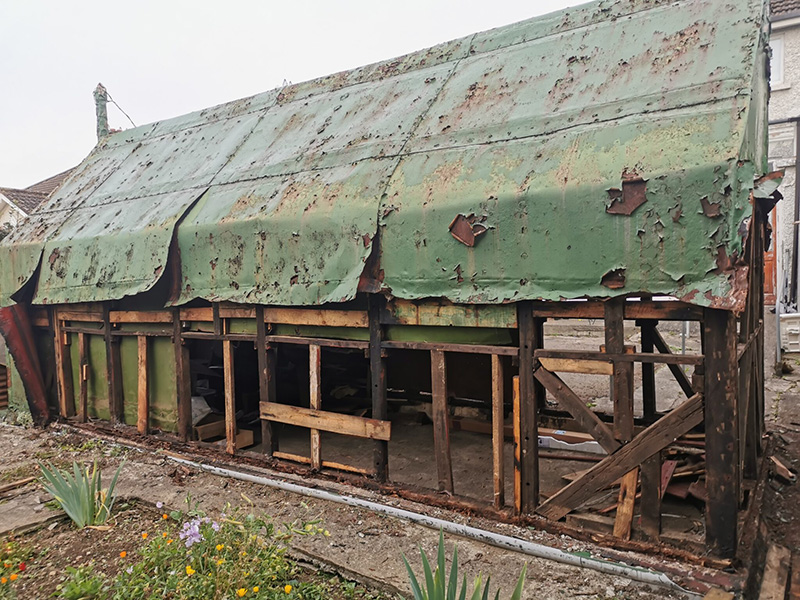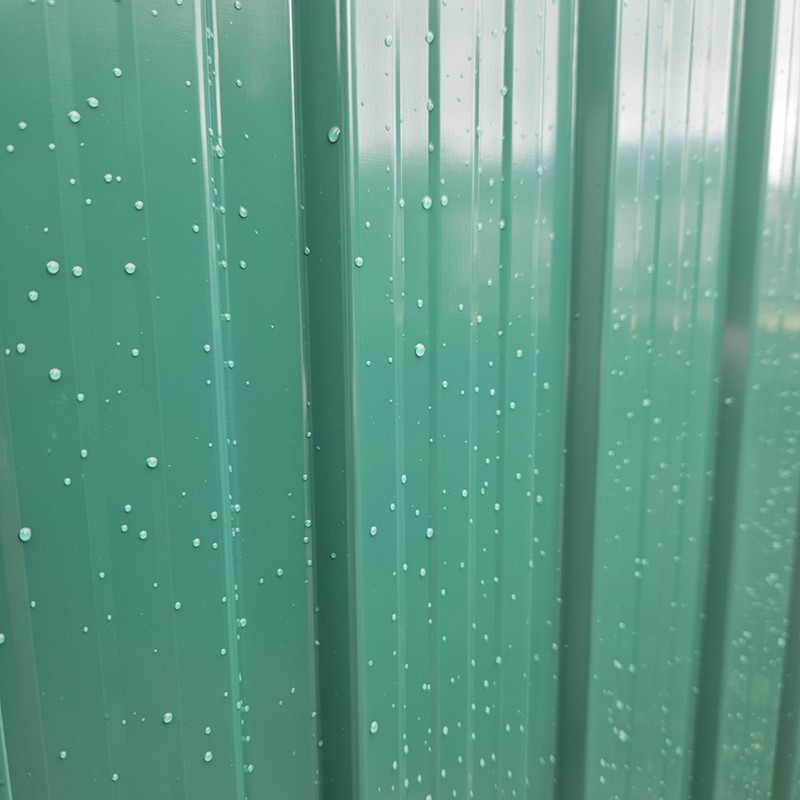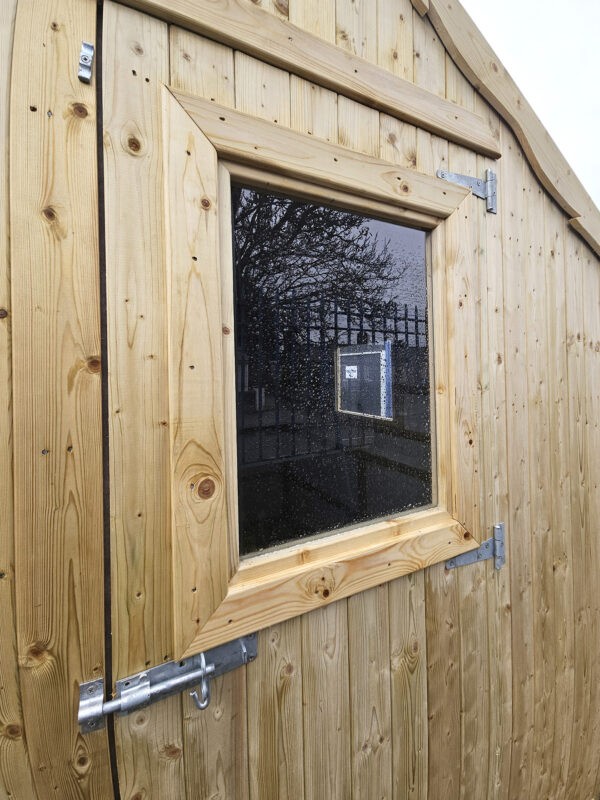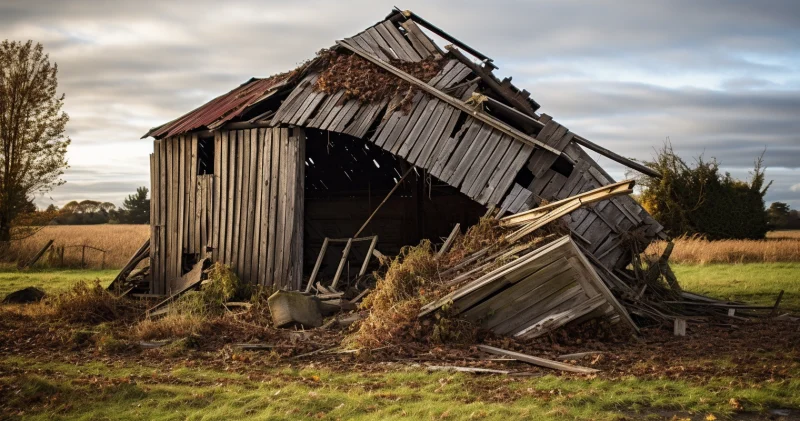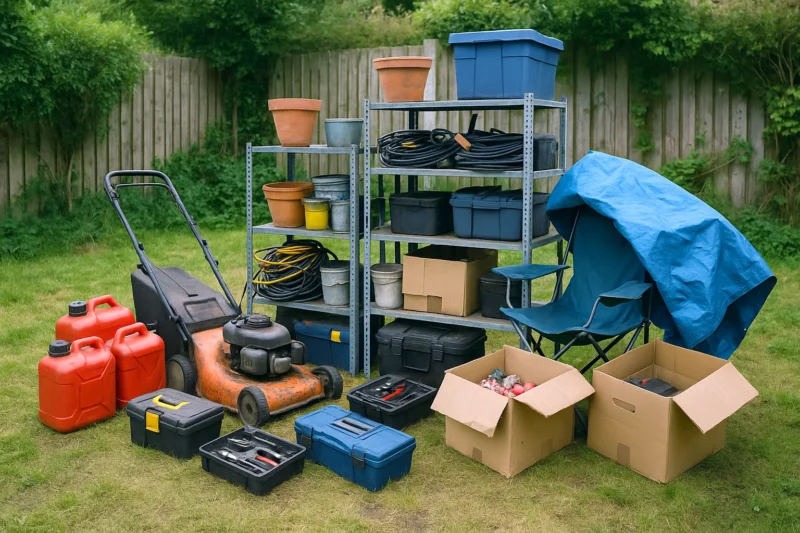How To
Can I move my garden shed?
Can I move my garden shed?
There are lots of reasons that you might want to move a garden shed.
- You’ve moved into a new house and you want to take your beloved garden shed with you.
- You’ve realised your shed is blocking light into your garden and want to move it to help your gardening aspirations.
- Someone is offering a free shed, provided that you come and collect.
- Or, if you’ve found that your garden shed is in a sub-optimal location, and want to protect it in the long-term.
These are all fine reasons to want to move a shed, but the question stands – can it actually be done? Let’s have a look at what you’ll need to consider before you go prancing about the garden with a hand truck, some rope and a glint in yer eye.
Note: Sheds are designed to be moved and at Sheds Direct Ireland, we do not recommend that you move your shed. Especially if you do not know what you are doing. We do not provide a shed-moving service and the following blog is written for illustrative purposes only.
What type of shed is it?
First things first – we need to look at the type of shed that you have. Typically, Wooden sheds and off-the-shelf steel sheds can be moved relatively easily – more on this later. Plastic Sheds shouldn’t prove any issue to move either – as anyone who owned one will attest to, as they’re practically Wendy Houses.
However, the old block-built sheds or, in my own personal case, a sheet-metal shed built to ‘withstand the Cuban Missile Crisis’, probably aren’t going anywhere (other than the tip).
Steel Sheds
Steel Sheds is a large catch-all term ,in some respects. It ranges from the likes of our Tiny shed to the Heavy Duty builds. So we’ll group them up into broad terms and let you know how best to move them.
Small Sheds
Small sheds like the Tiny Shed or the Balcony Store are easily moved by two people, providing they’ve been emptied and are unbolted. Where possible, get the shed onto a sheet or under some ropes and move steadily and smoothly in as few movements as possible. Do not physically lift and manoeuvre the shed, as this may misalign the panels and cause problems with the roof (especially if you, or the person proposing it, lifts things like this).
Larger part-assembled Sheds
Larger sheds like the Heavy Duty sheds that we previously stocked, come part-assembled. The walls are all one unit, rather than being composed of various panels. These are too heavy for the average pair of people to move and it’s not advisable to get a larger team to move these, either. Well, not unless they’re very experienced with this kind of thing. It would be recommended to deconstruct them prior to moving. Obviously, this is a sizeable tasks and not without it’s safety concerns. Know what you’re getting yourself into with this before you jump into this with two feet. Contact the manufacturer of the shed, ask for the instructions for them (if they still exist) and work them in reverse. Take apart the unit fully before you move – keeping two sidewalls connected can damage the joints (the sheds’, not yours) and this can be difficult to fix after-the-fact.
Larger sheds will take considerably longer to move. The moving of these sheds should involve planning and as many people as possible. A move like this should not be rushed into.
Panel-built Sheds
Most of our Steel Sheds are Panel-built, i.e., they are a composed of a sequence of panels that connect together to form walls. The benefits of this, is that the boxes of these sheds can go through a house, to get into a back garden, but moving them after they have been assembled, can be a little tricky. As with the smaller sheds mentioned above, some of these panel-built sheds can be moved with Moving Straps. This would only be the case if you’re moving within the garden, obviously.
If you are moving it beyond the confines of your garden, access will decide the best course of action. If you have no access restrictions, like a detached country house (or one of our showrooms), you can move these sheds in a variety of ways. The redditor below details how he did it. We wouldn’t recommend the winch aspect, but getting it up high and moving it as one unit is doable.
That said, the safest way to do this is to disassemble the shed and reassemble it at the new site. I’ll be honest, this is a considerable amount of work, arguably, it’s more involved than moving the large, part assembled sheds. Check out our instructions page here and pick any shed in the Classic range, for example. You can see how many screws, panels and caps are involved to give you an idea of how intense this will be. If at this stage you’re thinking, ‘well, this is a lot of hassle’, you’re right. Sheds are not designed to be moved and dragging one out and around is a lot of hassle, expense and it will most likely end up with you having a slightly damaged shed at the end of it. You can always check out our Steel Sheds – chances are the price (and effort) of moving a shed is a lot more than getting a brand new one.
Wooden Sheds
From what I’ve read, one of the most overlooked parts of moving a wooden shed is properly preparing the windows. Last thing you want when you’ve moving a shed is a garden/shed-full of broken glass. Safely remove the glass and set it aside, before you do anything else.
Right, so moving wooden sheds is very much dependant on the shed’s condition. Wooden sheds that are in top-nick, with no notable structural issues can be moved around a garden with little issue. This video from cheapsheds.com in the US is old, sure, but it’s got some good advice in there. (Warning: There is a lot of Comic Sans used in this video). If you’re looking for a step-by-step post that’s not a video, Secrets of Shed Building has some great information on that page too. If all else fails, do what the Amish do and get everyone that you know (and their cousins) involved.
For Wooden Sheds that are in less than stellar conditions, the general advice would be to not move it. Wooden sheds that are decades old have served their purpose, they don’t owe you anything. They can probably be saved and moved to a new location, however they will require substantial work. The frame of the shed should be looked at closely and the felt on the roof would most likely need to be replaced. The years of exposure to the elements and general wear-and-tear will mean that the structure of the shed is most liklely compromised. Don’t be surprised to find a shed like this come apart at the seams during a move and it will be very difficult to put together again.
Side note: if the shed was constructed before 2004, be careful when you’re moving/handling it. The restrictions for using CCA treated timber only took effect that year, so it would need to be handled as hazardous waste. Contact the Department of Agriculture for details on how to correctly dispose of this timber.
Plastic Sheds
Depending on the quality of your plastic shed, moving it should be pretty easy. This imgur album shows how someone successfully moved their plastic shed.
Block Sheds
Hey, you gotta know when you don’t know something – and this is beyond our knowledge. Speak to a Brickie or tradesman and see what they recommend.
Will it survive the move?
Okay, while you can move a shed, you need to ask yourself should you move a shed. This mostly applies to getting a free shed from the likes of DoneDeal or Facebook Marketplace. Chances are that if someone is giving away a shed, it’s not up to much, anyway. That’s not to say it can’t be done, but just be realistic with yourself.
Obviously the pictures are the first port of call. Is it visibly rotting or rusted? Are there missing panels, bolts or fixings? Does the base look compromised? Then you need to ask, “why are these guys giving it away?”. It it looks like it’s for the dump, don’t be the stooge who gets stuck forking out for the skip hire to get rid of it.
If you can answer yes to these questions, it might be worth your time to move the shed
- Is it in very good condition with no damaged sides?
- Can it be taken away ‘as-is’, i.e. in one unit?
- Do you have access to it on all sides?
- Does the person giving it away have access to their garden that doesn’t require a crane?
- Have you seen photos of the inside (and there is no visible rot, rust)?
If these are all positive, chances are you’ll be able to move this shed from their garden with little effort. If not, be prepared for a good bit of effort on your behalf.
Do you have enough access to make it happen?
Okay, back to general moving of a shed. Access is very important. As you’ve seen from the above examples, moving a shed within a garden usually requires lifting the shed to some extent. This isn’t an issue if you’ve followed the best principles for positioning a shed in a garden. That said, a lot of people do inevitable build their shed up against a wall, or walls. Moving a shed with Moving Straps or ropes will be nigh-on-impossible without enough access to all sides.
You might think “well, we’ll shuffle it out enough and make enough access”, which, yes, that’s normally a good solution – but you’ll have to make sure that you have enough base underneath to keep the structure intact. If you move a steel shed off the base to give yourself enough access, you risk warping panels or damaging the structure of the frame. If necessary, expand the base to compensate for this. This doesn’t mean adding a layer of concrete – but you may want to consider adding some slabs or Shed Bases to make the move as smooth as possible.
Where are you going to store your items during the move?
Moving the shed is one thing – but you’ll need to clear out everything inside the shed during the move. Make a plan to have your stored goods safe for a few days. While the move shouldn’t take this long, have a backup plan in case things go arseways, be that with the move itself or with the weather.
Are you entitled to move it?
Alright, this is a strange one – but it’s not without precedent. If you’re renting a property and there’s a shed already there, chances are you probably aren’t entitled to take the shed with you. I only bring this up as we get semi-regular Facebook messages asking us if we can move a shed from a rented property. We can’t anyway (we don’t offer this service!), but we thought we’d flag this with you just incase you are one of these shed-bandits.
Would it be easier to just buy a new shed?
If you (or your other-half) have gotten it into your head that the shed needs to be moved, you may be overlooking a simpler option. A new shed might be easier, less hassle – and depending on what you need to move an old shed, cheaper, too. On top of this, you’re getting a new shed with a warranty or workman’s guarantee. We all like recycling things where possible – but old and damaged sheds may not be fit for purpose or a danger to you and the family.
We’ve a range of styles and sizes available for both steel garden sheds and wooden sheds, so you can get one that suits your garden perfectly and with Humm Finance available, you can spread the cost of this new shed too. Get in touch with us if you’ve any questions about our sheds.
Any other questions?
If you’ve a question about moving your shed (or getting a new one), get in touch with us. If we don’t know the answer there-and-then, we’ll get the right information for you and get back in touch. We’re also over on Facebook and Instagram if you’d rather message us on those platforms.



